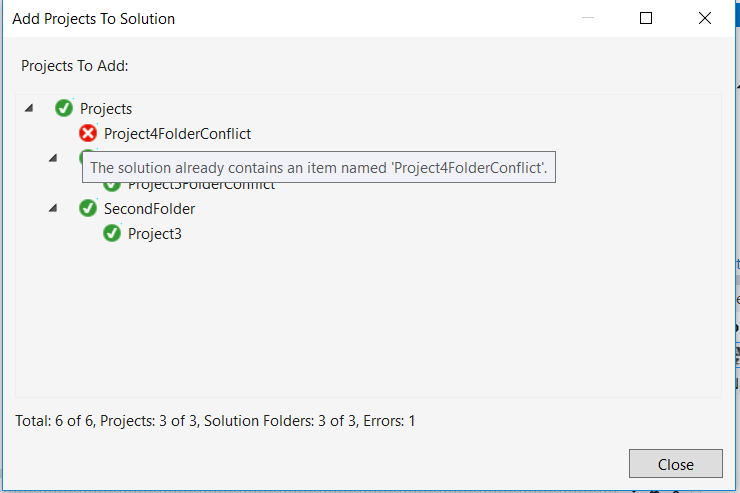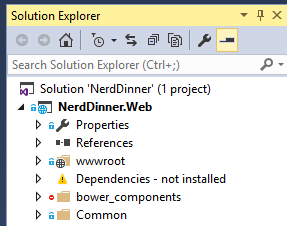

- How to open multiple solutions in visual studio update#
- How to open multiple solutions in visual studio full#
- How to open multiple solutions in visual studio code#
- How to open multiple solutions in visual studio windows#
So, in an effort to be a keyboard junkie, I created these two batch files in my source folder – one for each solution. It’s faster and easier to close the solution and reload, IMO).
How to open multiple solutions in visual studio code#
I recently got tired of having to click around the folder structure to open the solution I want when I need it – especially when I am closing / reopening the solution whenever I pull the latest code down to my local machine (I HATE the Visual Studio “reload” dialog boxes. They share a common root folder called “Source” and I run my local git repository from the sources folder which means I usually have a git bash window open in the source folder. I have 2 solutions in my source tree that I use on a very regular basis. I got the idea, not the implementation, from MT.) (Note: the MT “open.bat” file is significantly more complicated than what I need or what this post talks about. I got this idea from the MassTransit source code… it’s a good idea because I’m an aspiring keyboard junkie and I’m tired of mouse clicking my way to my solution files. You can also run SlnGen against a traversal project in a rooted folder to open a Visual Studio solution containing that view of your project tree. So, VStudio did the monotonous work for us.Īnyway, it is unfortunate that there is no super-simple way to duplicate and "fork" solutions like this.but the above was the simplest I could come up with.Open A Visual Studio Solution From A Command Prompt Or Batch File 2 April, 2010. For example, you can run it against a unit test project and be presented with a Visual Studio solution containing the unit test project and all of its project references.
How to open multiple solutions in visual studio full#
For example, Resources.resx Full Path is now ".\gold\gold\Properties\Resources.resx". Now when you open gold.sln (with VStudio), the "Full Path" properties for the items are all updated properly to "./gold/gold/.".
How to open multiple solutions in visual studio windows#
In Windows Explorer, now rename the "gold/silver" folder to "gold/gold". (it still has the old reference to "silver").now change the above to something like: For this example, it would look something like this: For example, inside gold.sln, you should see a "Project" section.change the paths in this section. Now, just change the folder names inside gold.sln to match your new copied solution.
How to open multiple solutions in visual studio update#
What a pain it would be to update the "Full Path" property for each and every item! Now, here's my trick to make things a little easier.Ĭlose VStudio (you should have saved "gold.sln" from Step (3) above, so VStudio should just close with no prompts. This is because we just copied-and-pasted without VStudio knowing about it, back in Step (1). it still has the old "silver" in the path name. At this point, you will notice that, if you click on /Properties/Resources.resx in the Solution Explorer, the "Full Path" property will show ".\gold\silver\Properties\Resources.resx". For easier discussion, let's talk about "Resources.resx".

Under each project, you will typically have items like "Properties", "References", "Forms", etc. Do this for all of your projects inside the solution.

Inside Visual Studio.in the Solution Explorer, right-click the Project Properties and choose "Rename". Save the solution (it will be saved as "gold.sln"). Inside Visual Studio.in the Solution Explorer, right-click the Solution Properties and choose "Rename". I got the errors to go away by installing the Windows Universal CRT SDK component, which adds support for legacy Windows SDKs. These are some solutions to remove opening errors for errno.h file. Inside the "gold" folder, open the silver.sln. Normally you will face c++ cannot open source file errno.h in MS Visual Studio c++ projects. Windows Explorer: copy and paste "silver".you will get "Copy of silver".

Here's how I went about duplicating a C# solution.to make it easier, let's call solution #1 "silver" and solution #2 "gold": In this case, my "TCP Chat" solution then remains stable, useful all by itself, and it can be used as a starting point for any other apps I want to create which utilize TCP. Once that solution reached a stable stage, I wanted to "fork" it off and use it as a starting point for my ultimate solution which would connect to my embedded device. But first I needed to make sure my basic TCP stuff was working. This is useful when you want the duplicate solution to become a totally separate entity.when you want to use the original solution as a "template" or starting point for a new solution.įor example, I wanted to develop a TCP app that communicates with an embedded machine. I have found the following method to work very well for duplicating a solution.and it's about the simplest approach when compared to other approaches I have seen.


 0 kommentar(er)
0 kommentar(er)
